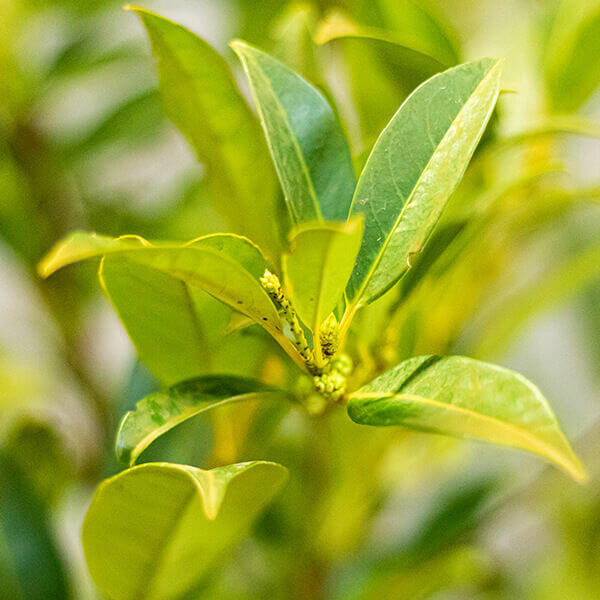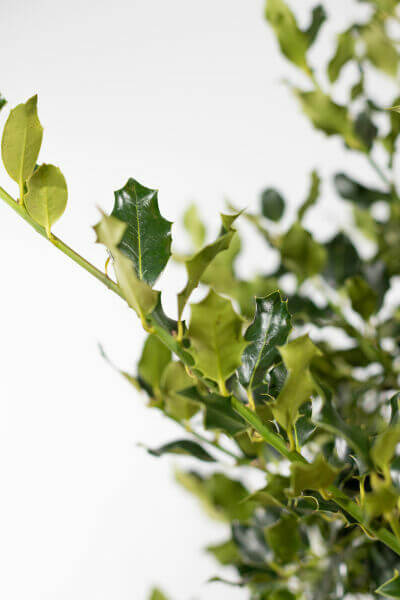Best Hedge Plants For Security Hedges
Boost your garden's attraction with rich hedge ranges such as Yew (Taxus), Thuja, Laurel, Photinia, and Bamboo, commemorated for their structural stability and environmental advantages.
Yew and Thuja offer evergreen protection and winter resilience, while Laurel provides rapid development and broad, fragrant leaves.
Photinia includes seasonal charm with its dynamic red foliage, and Bamboo provides a low-maintenance, peaceful atmosphere.
These hedges enhance air quality, decrease sound, and develop tranquil, personal areas.
Proper planting, spacing, and upkeep make sure energetic growth and environmental consistency.
Check out how these lush varieties can elevate your garden's beauty and well-being.
Key Takeaways
Change Your Garden With Lush Hedge Ranges
- Select Yew for its thick, evergreen growth and unrivaled longevity.
- Select Laurel for its quick development and broad leaves, ensuring quick privacy.
- Select Photinia for its vibrant seasonal foliage, which turns a striking dark red.
- Use Bamboo for a low-maintenance, winter-hardy hedge with aesthetic appeal.
- Space plants 2-3 per meter and prune routinely for ideal development and health.
Popular Hedge Plants
When changing a garden with rich hedge varieties, it's important to think about popular hedge plants such as Yew, Thuja, Laurel, and Photinia due to their distinct qualities and advantages.
Yew (Taxus) is highly esteemed for its longevity and dense, green growth, making it a prime choice for enduring landscapes.
Thuja is kept in mind for its evergreen foliage and robust winter season strength.
Photinia includes seasonal vibrancy with red leaves that darken gradually, producing dynamic visual appeal.
Laurel provides rapid growth and aromatic, broad leaves, perfect for fast personal privacy.
Furthermore, Bamboo is an outstanding choice for ambiance, using a low-maintenance, winter-hardy alternative that improves the garden's aesthetic with its elegant, swaying walking canes.
These choices deal with a variety of horticultural requirements and choices.
Benefits of Garden Hedges
Garden hedges offer a wide variety of advantages, making them a valuable addition to any landscape. These natural barriers are affordable to implement and offer considerable wind security, improving air flow and contributing to noise reduction. The thick foliage of hedges like Thuja and Beech makes sure personal privacy by obstructing presence, producing a peaceful and secluded environment.
Hedges likewise play a vital role in microclimate guideline, offering a stable environment that cultivates plant development and minimizes temperature level changes. Their intricate leaf structures filter contaminants, improving air quality and contributing to a much healthier garden community.
Additionally, hedges excel in sound reduction, soaking up and deflecting sound waves to lower ambient sound levels. This dual performance of supplying both visual and acoustic personal privacy enhances the general tranquility and aesthetic appeal of any garden.
Planting and Maintenance Tips
For an effective hedge, meticulous preparation of the planting location is vital. Ensure the soil has appropriate pH and drain to support strong root development.
Space the plants properly for the picked species. Water the hedge regularly during its initial development stage, adjusting as needed with seasonal changes.
Carry out a systematic pest control and illness avoidance strategy, using chemical or natural treatments when required. Routinely check for aphids, mites, and fungal infections.
Apply mulch to keep wetness and reduce weeds. Seasonal pruning promotes thick growth and air flow, vital for plant health.
Following these guidelines will assist you cultivate a dynamic, well-maintained hedge that enhances the beauty of your garden.
Spacing and Trimming Guidelines
Spacing and Trimming Guidelines
Appropriate spacing and trimming are essential for cultivating healthy, visually appealing hedges. Sufficient spacing guarantees each plant receives enough nutrients, light, and air flow.
Follow these standards for optimal hedge maintenance:
- Spacing: Position hedge plants 2-3 plants per meter to encourage robust development.
- Pruning Strategies: Routine pruning is vital for maintaining desired hedge height and shape. Trim new growth in summer season and cut down older wood during winter.
- Seasonal Care: Adjust cutting schedules and approaches according to seasonal requirements to guarantee plant health.
- Hedge Height: Routinely screen and trim to keep the wanted hedge height and accomplish uniform visual appeals.
Abiding by these steps will ensure your hedge grows, improving both the appeal and functionality of your garden.
Picking the Right Hedge
Selecting the Right Hedge
Selecting the proper hedge includes evaluating aspects such as fully grown height, foliage density, and environmental strength. Successful hedge plant selection needs comprehending each species' development qualities and site-specific adaptability.
For instance, Yew (Taxus) provides exceptional durability and thick growth, while Thuja is notable for its winter season resilience. In addition, considering upkeep requirements is crucial; fast-growing types like Laurel or Privet demand regular cutting, whereas low-maintenance choices like Bamboo or Ivy may be more suitable for those looking for minimal maintenance.
Environmental elements such as soil type, light schedule, and wetness conditions ought to likewise guide the choice procedure. This careful method ensures the selected hedges will grow, providing both functional and visual advantages to the garden landscape.
Delivery and Planting Recommendations
To ensure your hedge plants flourish, they must be provided by specialized couriers and planted immediately upon arrival.
Follow these necessary steps for successful planting:
- Soil Preparation: Enhance the soil with raw material to improve drainage and nutrient content.
- Planting Depth: Produce a trench two times the width and equivalent to the depth of the root ball.
- Watering Techniques: Water thoroughly after planting, keeping the soil consistently damp but not filled.
- Mulching: Use a layer of mulch to maintain moisture and suppress weeds.
Client Support and Service
Provided the important function of prompt help in horticultural pursuits, our consumer assistance group is available six days a week through telephone, email, and social media to offer expert guidance and swiftly deal with any concerns. Their commitment to fast action times makes sure consumer fulfillment by solving questions connected to plant health, optimum planting approaches, and upkeep schedules.

-------------------
Within 24 hours
This comprehensive support group, strengthened by an outstanding 9.3/ 10 client ranking, highlights our dedication to boosting the gardening experience for every single client.
Frequently Asked Concerns
How Long Does It Take for Hedge Plants to Establish?
Hedge plants generally require one to three years to become fully developed, with the specific period differing by types and growing conditions.
Reliable care throughout this vital period is important for robust growth. Consistent watering, vigilant weed control, and proper fertilizer application are essential in promoting strong root advancement.
For instance, fast-growing species like Laurel may establish faster, while slower-growing ranges such as Yew may take longer. Persistent maintenance accelerates the facility procedure, resulting in dense and healthy hedges.
What Are the Finest Hedge Plants for Personal Privacy?
The question of the very best hedge plants for personal privacy includes evaluating evergreen and deciduous options.
Evergreen hedges like Thuja, Laurel, and Cypress supply year-round protection, ensuring constant personal privacy.
In contrast, deciduous hedges such as Beech offer seasonal personal privacy, shedding leaves in chillier months.
Key upkeep suggestions for privacy hedges consist of regular cutting, fertilizing in spring, and appropriate spacing-- generally 2 to 3 plants per meter.
In addition, constant watering and diligent weed elimination are important for promoting healthy, dense development.
Can Hedge Plants Attract Wildlife to My Garden?
Yes, hedge plants can bring in wildlife to your garden by offering essential advantages like shelter, food, and nesting sites, consequently enhancing regional biodiversity. Yew, holly, and laurel are exceptional for attracting birds, while ivy supports a range of insects.
However, it is necessary to note that there are some downsides, such as increased maintenance to manage bugs and regular maintenance. Thoroughly selecting and keeping hedge varieties can help stabilize these benefits and disadvantages, ultimately promoting a vibrant and sustainable community in your garden.
Exist Any Flowering Hedge Plants Available?
Yes, there are flowering hedge plants offered that can boost the beauty of your garden.
For instance, Elaeagnus, likewise called Olive Willow, produces fragrant white flowers in the fall, adding a touch of sophistication.
Photinia, another popular option, showcases dynamic red leaves that mature into a rich green, developing a vibrant visual effect throughout the seasons.
To ensure these plants prosper, it's important to practice proper pruning techniques and seasonal maintenance, such as trimming new development in the summer season and cutting down in the winter season.
These procedures will help maintain the health and aesthetic appeal of your flowering hedges.
How Do I Prevent Bugs in My Hedge Plants?
To avoid pests in hedge plants, employ natural pest control techniques and preserve appropriate hedge care. Introduce useful bugs like ladybugs, which take advantage of hazardous insects, to produce a well balanced community.
Routinely examine your hedges for signs of infestation and quickly eliminate any affected parts to prevent the spread. Ensure the health of your hedges by applying balanced fertilizers and supplying appropriate water.
Make use of mulching to keep soil moisture and proper spacing to reduce plant stress and promote robust development. These practices jointly help in reducing pest concerns and keeping a healthy hedge.
Conclusion
In essence, selecting the right hedge ranges such as Yew, click here Thuja, and Laurel can change any garden into a relaxing sanctuary. These plants supply year-round greenery, enhance visual appeal, and deal practical advantages like sound reduction and wind defense.
Correct planting methods, accurate spacing, constant watering, and seasonal trimming are essential for ideal growth.
Reliable shipment services and professional customer assistance ensure a smooth experience from purchase to planting, making it simpler than ever to raise your outdoor area.
Garden hedges offer a plethora of benefits, making them a valuable addition to any landscape. These natural barriers are economical to implement and supply significant wind security, enhancing air flow and contributing to noise decrease. The thick foliage of hedges like Thuja and Beech guarantees personal privacy by obstructing exposure, developing a secluded and peaceful environment.

Pruning Strategies: Routine pruning is important for maintaining wanted hedge height and shape. Trim new development in summertime and cut back older wood during winter season.
Comments on “Best Hedge Plants For Mediterranean Areas”